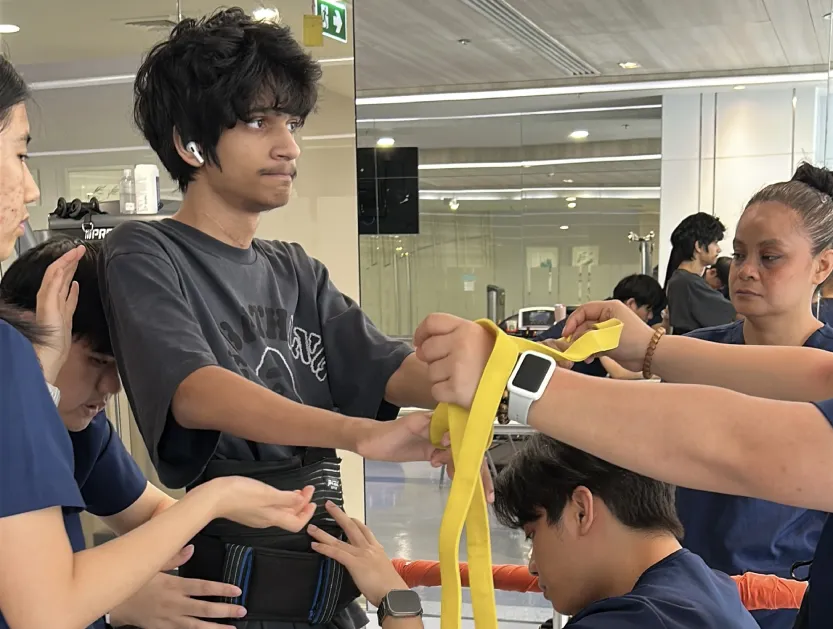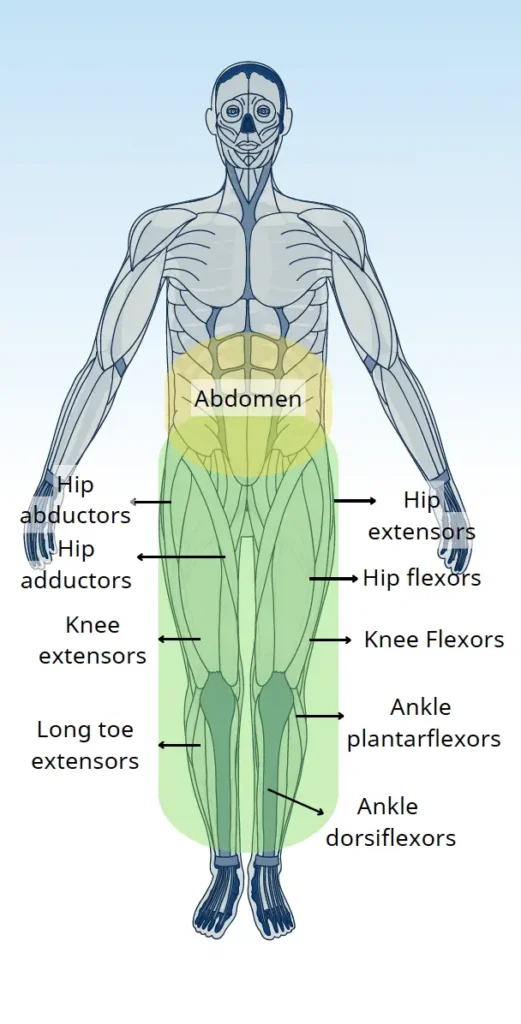Syed
- Spinal Cord Injury (SCI),
- C7, Incomplete
Epidural Stimulation

| Treatment received | Implantation site | Number of devices | Deration of stay |
|---|---|---|---|
| Epidural Stimulation | Lumbar spinal cord | 1 | 35 days |
| Post-surgical care | Total sessions | Sessions per week | Time (Hr.) per session |
|---|---|---|---|
| Mapping | 90 | 20 | 1 |
| Physical therapy | 25 | 5 | 1 |
| Total sessions of rehabilitation | 115 |

| Muscle improvement | Before ES surgery | At discharge (35 days after ES surgery) |
|---|---|---|
| Hip flexors | 1 | 3 |
| Hip extensors | 1 | 3+ |
| Hip abductors | 0 | 0 |
| Hip adductors | 0 | 0 |
| Knee extensors | 0 | 4 |
| Knee flexors extensors | 0 | 0 |
| Ankle dorsiflexors | 0 | 0 |
| Ankle plantarflexors | 0 | 0 |
| Long toe extensors | 0 | 0 |
| Abilities & Symptoms | Before ES surgery | At discharge (35 days after ES surgery) |
|---|---|---|
| Standing with support | Dependent with maximum assistance | Dependent with minimum assistance |
| Stepping with support (for more than 10 meters) | Dependent with maximum assistance (using robot with hoist) | Dependent with minimum assistance (walker) |
| Standing balance | Poor * | Good * |
| Sitting balance | Fair* | Good * |
| Motor coordination (while stepping) | Good * | No change |
| Sit to stand (in a walker) | Moderate assistance | Minimal assistance |
| Ability to transfer | Good | No change |
| Ability to use abdominal muscles during bowel program | No concern | No concern |
| Stamina & Fatigue | Low endurance | Improved |
| Spasticity | Little spasticity | Increased (given program to help) |
| Abilities & Symptoms | Before ES surgery | At discharge (35 days after ES surgery) |
|---|---|---|
| Neuropathic pain | No | Developed neuropathic pain (but under medication) |
| Temperature sensations | Impaired | No Change |
| Proprioception | Impaired | No Change |
| Bladder sensation | No sensation | No Change |
| Bowel sensation | No sensation | No Change |
| Abilities & Symptoms | Before ES surgery | At discharge (35 days after ES surgery) |
|---|---|---|
| Sweating ability | No | Developed sweating |
| Temperature regulation | Normal | Normal |
| Blood pressure regulation | Autonomic dysreflexia and orthostatic hypotension | Improved |
There were immediate contractions in his lower limbs as soon as the Epidural Stimulator was turned on. During the 2nd week of hospital stay, Syed started body weight and standing training and ultimately moved on to perform the locomotor training. Towards the end of the treatment, he was able to stand up and walk with upper body support.
During the treatment there were only minor deep sensations in his body which were expected as this is considered an early phase of recovery.
Syed suffered from autonomic dysfunction and postural hypotension. This appeared to have been stabilized during the treatment and his blood pressure levels remained stable.
His sitting function showed remarked recovery. He reported improved static and dynamic sitting balance and his overall standing stability improved.
Syed also showed improvements in his standing stability and balance. He was able to stand with minimal assistance which continued to improve further with training.
Syed sustained a traumatic spinal cord injury at C6-C7 level resulting in weakness in his upper limbs and complete paralysis in his lower limbs. With extensive training in Malaysia, his upper limb functions significantly improved to an extent where he regained partial functions back. However, his lower limbs remained completely paralyzed.
He was evaluated for a potential Epidural spinal cord stimulation surgery, specifically targeting his lower limbs motor function. He went through extensive medical evaluation after which it was concluded that Syed was a suitable candidate for the treatment.
The surgery went well without side effects and there was a recovery period of 2 days. After that we started mapping lower limb muscles which showed immediate signs of recovery. During the 2nd week of the treatment, we started standing and walking training which continued towards the end of his 35 days stay. At the end we saw significant recovery of his muscle functions to where he was able to stand and walk with upper body support. There were mild changes in his sensory functions, improved standing and sitting balance, and improved autonomic function. Also, due to the level of injury, cervical level, he suffered from postural hypotension which has been stabilized during this time here and his overall blood pressure level reminded stable with no major drops. The overall treatment outcomes were extremely satisfactory, and Syed was discharged with rehab programs to continue back in Malaysia.
We use cookies on our website to give you the most relevant experience by remembering your preferences and repeat visits. By clicking “Accept All”, you consent to the use of ALL the cookies. However, you may visit "Cookie Settings" to provide a controlled consent.